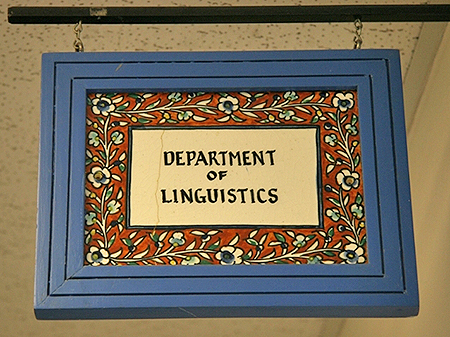
Linguistics ETDs
Publication Date
5-1-2015
Abstract
This study investigated whether different instructional approaches affected adult English-as-a-Second-Language (ESL) learners production and recognition of target formulaic sequences, as measured by oral and written responses on pretest and posttest and a psycholinguistic experiment. Specifically, the goal of the study was to replicate and extend prior research that examines the ways non-native speakers of English acquire and process various types of formulaic sequences in their oral and written production and the validity of holistic storage and processing of those sequences in the learner's mind (Jiang & Nekrasova, 2007). Eighteen adult ESL students were randomly assigned to the following conditions: (a) Implicit instructional approach, where the target formulaic sequences were not identified for the learners in any way; (b) Analytic instructional approach, where the target formulaic sequences were presented with a key word or another important content word identified in bold type; and (c) Holistic instructional approach, where learners were presented with formulaic sequences identified as whole multi-word sequences. Production and recognition studies were used to investigate the main research questions. During the production study, participants were engaged in 6 instructional sessions that employed various instructional approaches. The pretest and posttest data were collected and compared. The outcome of this study failed to yield any quantitative results. During the recognition study, participants performed a grammaticality judgment task during which they had to determine grammatical correctness of various multi-word sequences, including the target formulaic sequences. The design of the study was a split-plot factorial with instructional approach as the between-subjects factor, and type of sequence--grammatical vs. ungrammatical, formulaic vs. nonformulaic, and semantically transparent vs. semantically opaque--as the within-subjects variable. Reaction times and error rate proportions were used as dependent measures in twelve repeated-measures ANOVAs. The results of the statistical analyses revealed that learners who received the Holistic and Analytic instructional approaches demonstrated significantly shorter latencies and greater accuracy responding to various types of formulaic sequences than the learners who were involved in implicit instructional approach, thus establishing a strong formulaicity effect in all three experimental conditions. Findings of the studies were interpreted in terms of theoretical and educational implications.
Language
English
Keywords
formulaic language, formulaic sequences, holistic approach, analytic approach, explicit teaching, adult ESL learners, semantic compositionality, idioms, holistic storage and processing, mental lexicon
Document Type
Dissertation
Degree Name
Educational Linguistics
Level of Degree
Doctoral
Department Name
Division of Language, Literacy and Sociocultural Studies
First Committee Member (Chair)
Meyer, Lois
Second Committee Member
Shaffer, Barbara
Third Committee Member
Edmunds, Paul
Recommended Citation
Temina-Kingsolver, Valentina. "Effects of Holistic and Analytic Instructional Approaches on the Acquisition of Various Types of Formulaic Sequences: An Empirical Study of Adult Learners of English as a Second Language." (2015). https://digitalrepository.unm.edu/ling_etds/35



Comments
Submitted by Valentina Temina-Kingsolver (volga@unm.edu) on 2015-04-15T05:14:26Z No. of bitstreams: 1 Dissertation_Valentina_Temina-Kingsolver.pdf: 1573018 bytes, checksum: f781a6ca4ac559bcf977ff1e436bfb65 (MD5), Approved for entry into archive by Doug Weintraub (dwein@unm.edu) on 2015-06-26T16:54:58Z (GMT) No. of bitstreams: 1 Dissertation_Valentina_Temina-Kingsolver.pdf: 1573018 bytes, checksum: f781a6ca4ac559bcf977ff1e436bfb65 (MD5), Made available in DSpace on 2015-06-26T16:54:58Z (GMT). No. of bitstreams: 1 Dissertation_Valentina_Temina-Kingsolver.pdf: 1573018 bytes, checksum: f781a6ca4ac559bcf977ff1e436bfb65 (MD5)